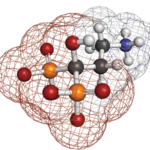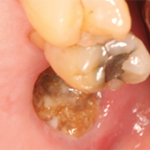FX006 is a novel, non-opioid, sustained-release, intra-articular formulation of triamcinolone acetonide (TCA) targeting moderate-to-severe osteoarthritis (OA) pain. The Food and Drug Administration (FDA) has put patient enrollment in a Phase 2b safety and tolerability study on a clinical hold due to the development of a knee joint infection, which occurred in one enrolled patient.1 In a completed Phase 2b dose-ranging trial, clinically meaningful and significantly better pain relief was obtained with FX006 versus the current injectable standard of care, immediate-release TCA. In addition, synovial fluid pharmacokinetic studies following a single intra-articular injection of FX006 showed therapeutic concentrations of the drug in joint fluid for at least 12 weeks.2 A Phase 3 international, multi-center, randomized, blinded, single-dose study in 462 patients with OA of the knee is planned. The study will have three arms, a 40 mg dose of FX006, placebo and a 40 mg dose of immediate-release TCA. The primary objective of this trial is planned to provide the second pivotal efficacy dataset against placebo at 12 weeks before submitting a New Drug Application (NDA). The trial will provide a key comparative dataset against immediate-release TCA. Anticipated NDA filing could be in 2016.
Odanacatib is a once-weekly cathepsin K inhibitor, which is currently in Phase 3 clinical trials to treat postmenopausal osteoporosis.3 The Long-Term Odanacatib Fracture Trial (LOFT) randomized 16,713 women age 65 years and older who had a diagnosis of osteoporosis and had become menopausal at least five years prior. All women received vitamin D 5,600 IU a week and up to 1,200 mg/day of calcium. Patients were randomized to receive weekly odanacatib 50 mg (n=8,357) or placebo (n=8,356). Odanacatib-treated patients had a 54% relative risk reduction of new and worsening radiographically assessed vertebral fractures, a 47% relative risk reduction of clinical hip fractures, a 23% relative risk reduction of clinical nonvertebral fractures and a 72% relative risk reduction of clinical vertebral fractures (P<0.001 for all). Progressive increases in bone mineral density (BMD) were seen over five years in the total hip and lumbar spine. The change in BMD from baseline at Year 5 was 9.5% for total hip and 11.2% for lumbar spine (P<0.001 for both).
In the odanacatib-treated group, 12 patients developed morphea-like skin lesions that resolved or improved following drug discontinuation. According to the Mayo Clinic, morphea is a localized or limited form of scleroderma, which usually appears on the abdomen, but can affect the face (which can make patients concerned about their appearance), arms and legs.4


